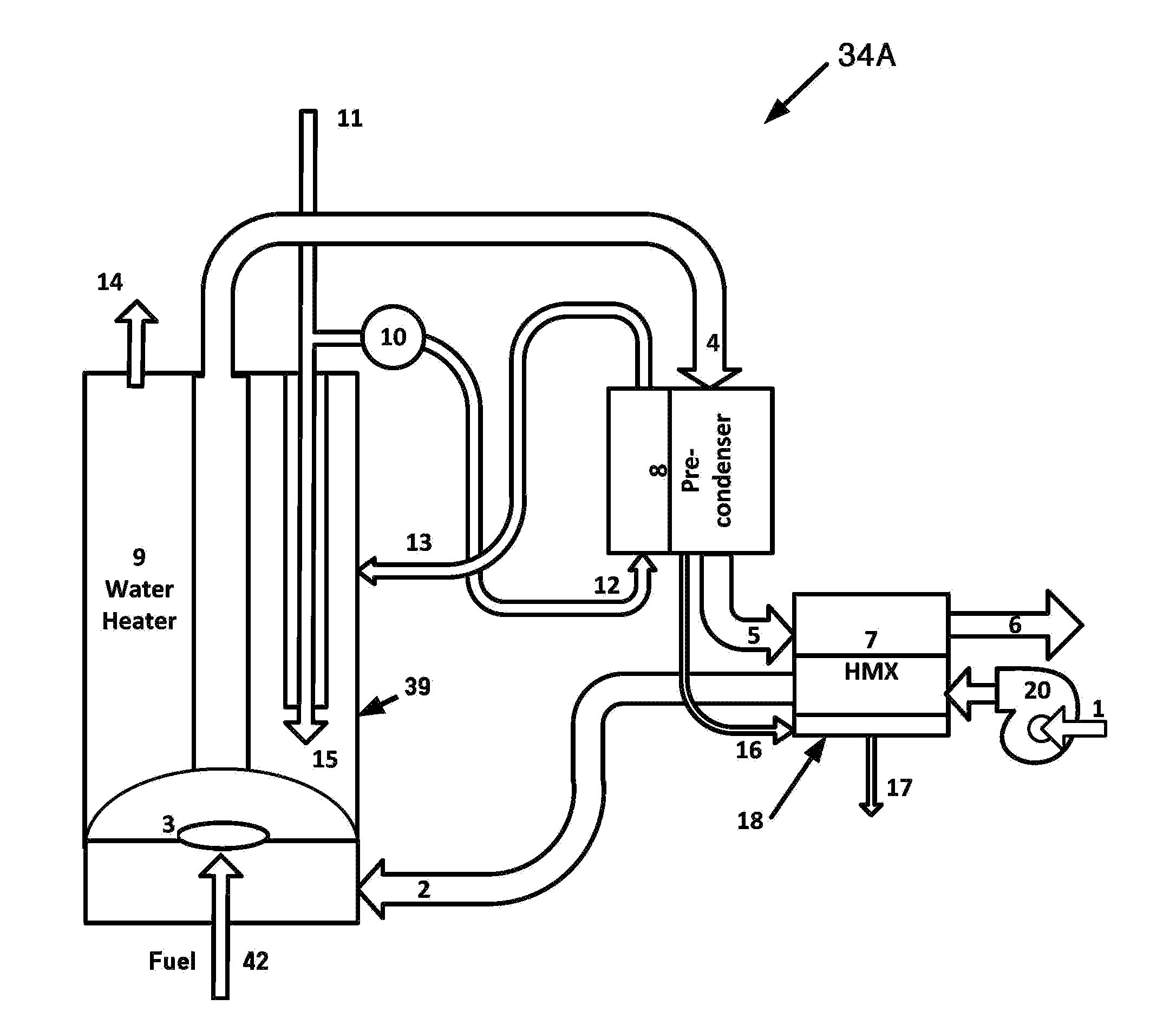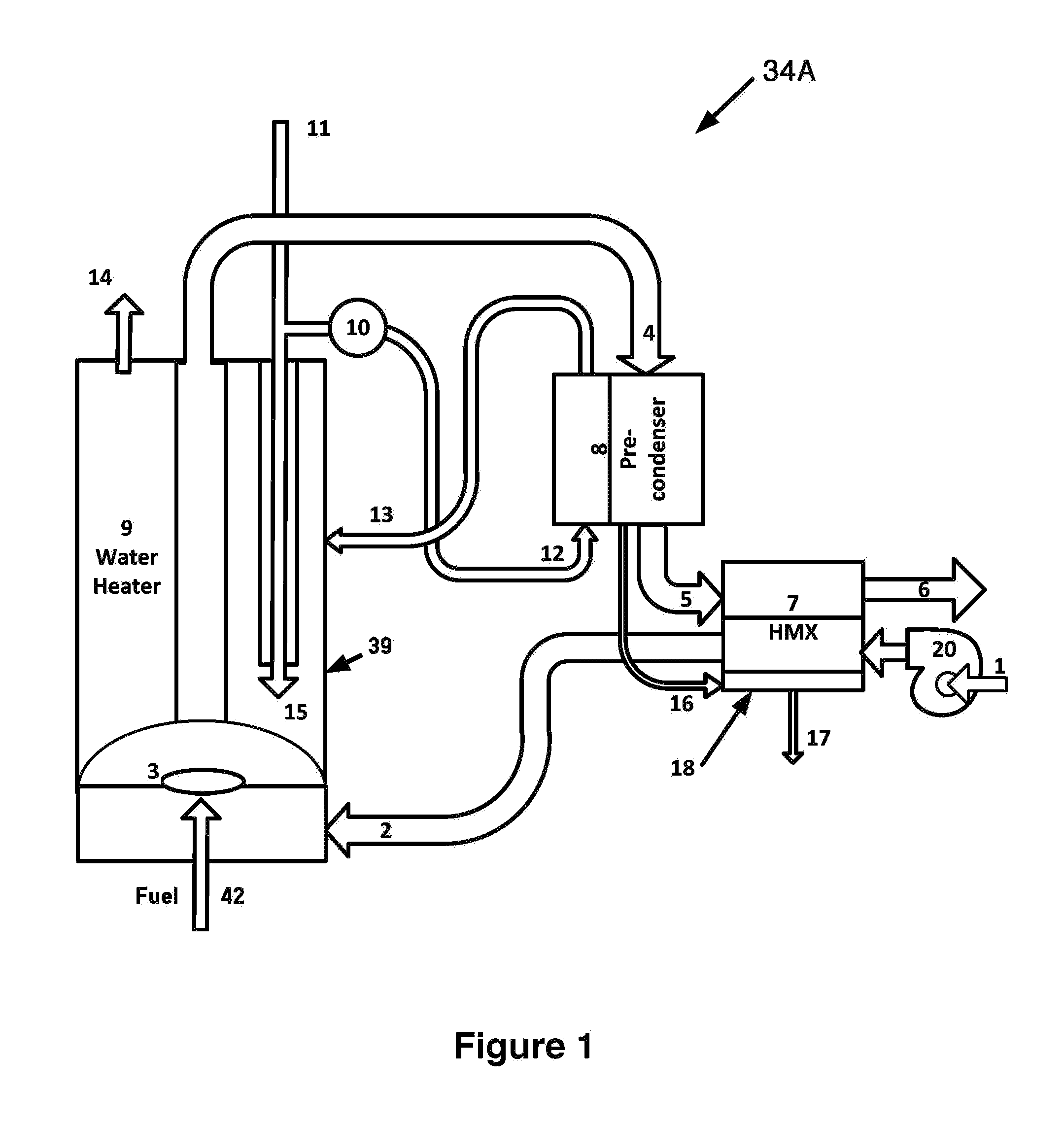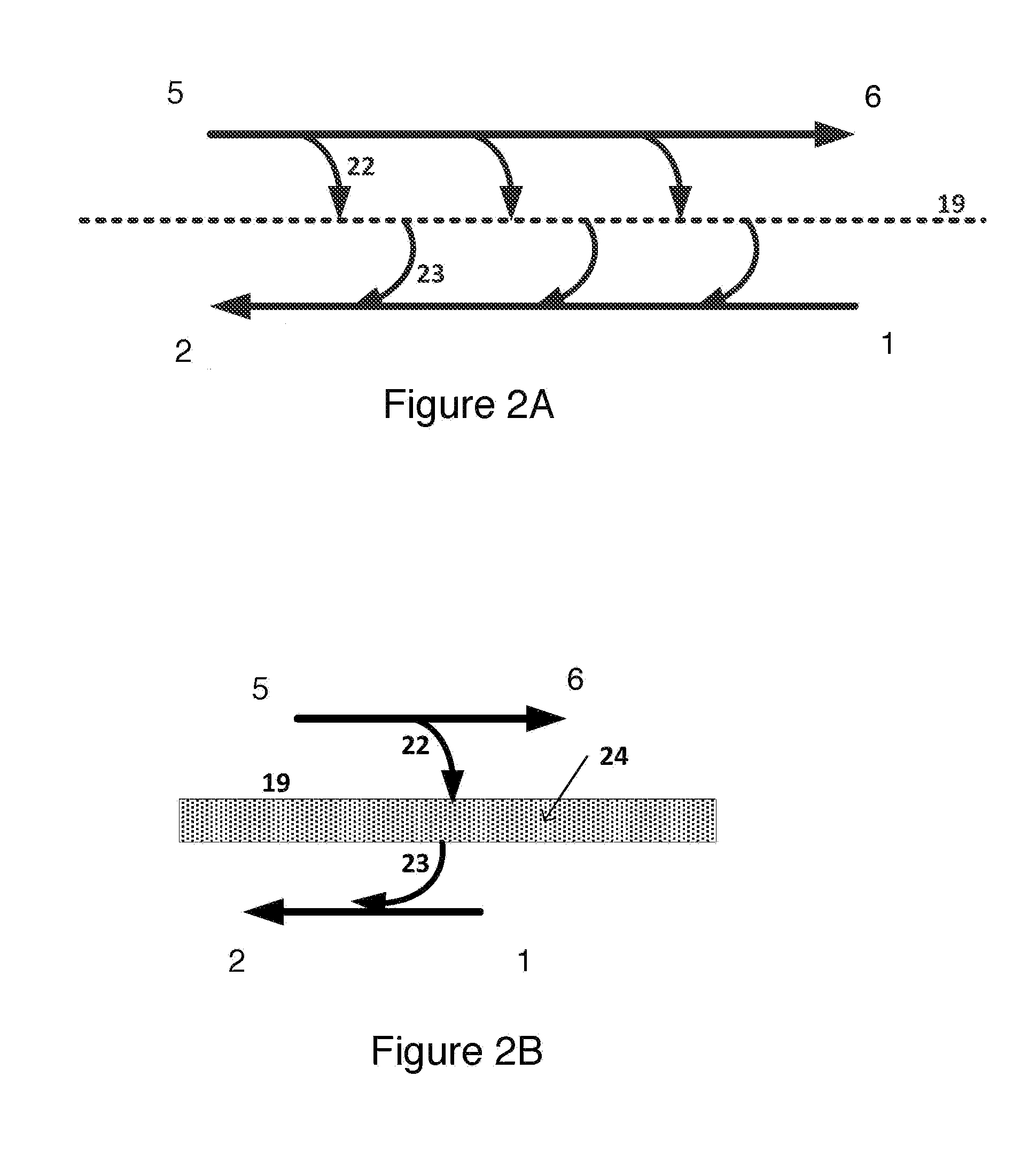Heat Recovery Method and Apparatus
a heat recovery and heat recovery technology, applied in the field of heat recovery methods and apparatuses, can solve the problems of high implementation costs, increase pollutants, waste of energy, etc., and achieve the effects of improving the thermal efficiency of water heaters, reducing the temperature of flue gas, and high efficiency
- Summary
- Abstract
- Description
- Claims
- Application Information
AI Technical Summary
Benefits of technology
Problems solved by technology
Method used
Image
Examples
Embodiment Construction
Reference Number List
[0061]1, 301 Input Combustion Air[0062]2, 302 Saturated Combustion Air[0063]3, 303 Combustor[0064]4, 304 Hot Flue Gas[0065]5, 305 Precooled (Warm) Flue Gas[0066]6, 306 Flue Gas Out (Cool)[0067]7, 307 Heat and Mass Exchanger HMX[0068]8, 308 Pre-cooler[0069]9 Water Heater[0070]10 Pump[0071]11 Cold Water In[0072]12 Cooling Water[0073]13 Heated Water[0074]14 Hot Water Out[0075]15 Cool Water to Tank[0076]16 Liquid (Condensate)[0077]17 Drain Water[0078]18 Trough[0079]19 Membrane,s (Plates)[0080]20 Fan[0081]22 Heat[0082]23 Evaporated Water[0083]24 Membrane Water[0084]25 Trough End Cap[0085]26 Dry (condensing) Side of Membrane[0086]27 Trough Overflow Perforations[0087]28 Channel Guide[0088]29 Impervious Coating[0089]30 Wet (evaporating) Side of Membrane[0090]32 Condensing Water Heater[0091]34 HMX Humid Air Recovery System[0092]35 Flue Gas Coil[0093]36 Tank Water[0094]37 Flue Gas Channels[0095]38 Combustion Air Channels[0096]39 Tank of Hot Water Heater 9[0097]40 Non-cond...
PUM
 Login to View More
Login to View More Abstract
Description
Claims
Application Information
 Login to View More
Login to View More - R&D
- Intellectual Property
- Life Sciences
- Materials
- Tech Scout
- Unparalleled Data Quality
- Higher Quality Content
- 60% Fewer Hallucinations
Browse by: Latest US Patents, China's latest patents, Technical Efficacy Thesaurus, Application Domain, Technology Topic, Popular Technical Reports.
© 2025 PatSnap. All rights reserved.Legal|Privacy policy|Modern Slavery Act Transparency Statement|Sitemap|About US| Contact US: help@patsnap.com



